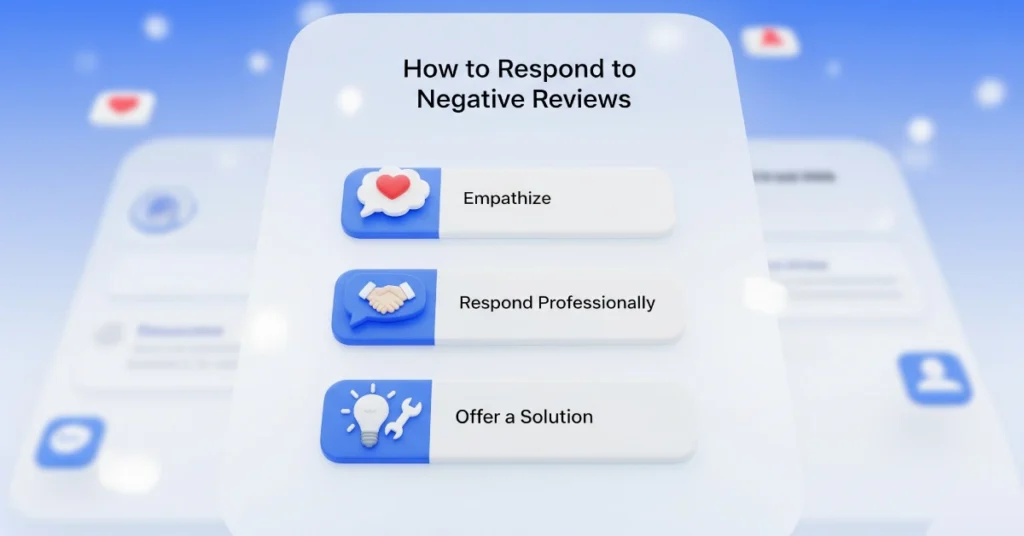Here’s the truth: if you’re a personal injury attorney, the phone rings when you show up in Maps. And the data backs it—our Local SEO Statistics show 76% of “near me” searches lead to a visit within a day.
I help PI lawyers with local SEO, and I’ve helped several achieve high rankings across their service area.
In this playbook on local SEO for personal injury lawyers, I’ll show you how to win the local pack with a tuned Google Business Profile, practice-area + city pages, ethical reviews, and smart citations—then track signed cases, not just clicks. Short, plain English, real examples.
Ready? Let’s go.
What Does Local SEO Mean?
Local SEO means showing up in Google Maps and nearby search results when people in your area look for what you do. For a personal injury attorney, that’s “car accident lawyer near me,” “slip and fall lawyer {city},” and so on.
Google weighs three things: proximity, relevance, and prominence—and proximity (how close the searcher is to your office) is a big deal.
So what’s inside local SEO for lawyers?
- Google Business Profile (GBP): I treat this like my storefront. Correct categories (“Personal injury attorney”), services, photos, Q&A, and weekly posts.
- Relevance with content: Pages that match practice areas + city (e.g., “Car Accident Lawyer in {City}”). This is how I beat the “only rank near your pin” problem.
- Prominence signals: Reviews, consistent citations in legal directories (Avvo, Justia, Martindale), and local links.
- Site experience: Fast, mobile-friendly, click-to-call, and clear CTAs—because PI leads often come from phones.
- Tracking: UTMs and call tracking so I measure signed cases, not just organic traffic.
“But how’s this different from organic SEO?” Good question. Organic SEO chases blue links everywhere. Law firm local SEO focuses on Maps and search engine results pages tied to location.
Simply, organic builds broad online presence; local SEO for attorneys gets you hired by people nearby—today.
If you want the longer compare, I break it down in my Local SEO vs Organic SEO guide.
Benefits of Local SEO for Personal Injury Lawyers
Here’s why I double down on local SEO for personal injury lawyers — it turns visibility into signed cases.
First, the big win: Maps = calls. When you rank in the local pack, prospective clients tap-to-call. That beats waiting on “blue links” any day.
But do you know what really compounds? A few focused moves:
- Trust on sight: A strong Google Business Profile with steady reviews lowers friction. People hire who they trust.
- Right page, right city: Build practice-area pages (car, truck, slip and fall) for each {city}. That’s how you expand beyond your office pin and meet local intent.
- Lower blended CAC over time: Law firm local SEO compounds; paid can’t. Your organic traffic keeps paying you back.
- Better conversions on mobile: Most PI searches happen on phones. A fast, mobile-friendly site with click-to-call and SMS chat wins the moment.
- Proof for Google: Clean citations in legal directories (Avvo, Justia, Martindale) and local links boost prominence across search engine results pages.
- Bilingual reach: In many US metros, Spanish pages and Spanish reviews widen your online presence without extra ad spend.
- Real attribution: With UTMs and call tracking, I measure signed cases, not vanity metrics.
Let’s see a quick example: Target “car accident lawyer {city}.” I publish a focused page, add FAQs, and link it from GBP (Products/Services). Reviews mention responsiveness and settlement guidance (no guarantees). Calls rise. Intake logs sources. That’s personal injury lawyer SEO working the way it should.
20 Search Terms Clients Use to Find Injury Lawyers
Before we proceed with the strategies, it’s important to know about the keywords that potential clients search on Google while looking for PI services.
Here’s the list of 20, use {city} (and sometimes {state}) to geo-match intent:
| S.No | Keyword | Search Intent |
| 1 | personal injury lawyer {city} | Transactional |
| 2 | car accident lawyer {city} | Transactional |
| 3 | truck accident attorney {city} | Transactional |
| 4 | motorcycle accident lawyer {city} | Transactional |
| 5 | slip and fall lawyer {city} | Transactional |
| 6 | wrongful death attorney {city} | Transactional |
| 7 | uber accident lawyer {city} | Transactional |
| 8 | lyft accident lawyer {city} | Transactional |
| 9 | dog bite lawyer {city} | Transactional |
| 10 | best personal injury lawyer {city} | Commercial |
| 11 | top-rated car accident lawyers {city} | Commercial |
| 12 | personal injury law firm near me | Transactional |
| 13 | contingency fee personal injury lawyer {city} | Commercial |
| 14 | free consultation personal injury lawyer {city} | Commercial |
| 15 | statute of limitations personal injury {state} | Informational |
| 16 | average car accident settlement {state} | Informational |
| 17 | how long after a car accident can you claim {state} | Informational |
| 18 | how to file a police report {city} car accident | Informational |
| 19 | avvo personal injury lawyer {city} | Navigational |
| 20 | state bar lawyer referral {state} | Navigational |
7 Steps to Do Local SEO for Injury Lawyers to Get More Clients
Here’s the simple plan I use with PI firms. Do these in order. Most wins come from the first three—then the flywheel kicks in.
1. Optimize Your Google Business Profile
If Maps is the front door, your Google Business Profile (GBP) is the doormat. I make it crystal clear what I do, where I do it, and how to contact me—fast.
To optimize your GBP, start by doing this:
- Pick the right categories: Primary: Personal injury attorney. Secondary (if relevant): Trial attorney, Law firm.
- Use your real name: No keyword stuffing in the firm name—Google will smack you.
- Lock NAP consistency: Name, address, phone must match your site and top citations.
- Add Services/Products: Create items for each practice area (Car Accident, Truck, Motorcycle, Slip & Fall, Dog Bite, Uber/Lyft, Wrongful Death).
- Pro tip: For expansion, add service–city items (e.g., “Car Accident Lawyer – {City}”) and link each Product URL to its matching landing page. That “link” drives relevance.
- Write a human description: 2–3 sentences, plain English. Mention practice areas and the metro you serve—no legalese, no promises.
- Attributes & details: Online appointments, wheelchair accessible, veteran-owned, etc. Add hours and special hours.
- Photos & short videos: Real headshots, office exterior/interior, community events. No stock.
- Q&A (seed it): Add and answer common questions: contingency fees, timelines, languages, after-hours availability.
- Posts (weekly): Safety tips, FAQs, community news, new guides—keep it helpful, not braggy.

Tracking (so you prove ROI):
- Add UTMs to Website and Appointment links (e.g., utm_source=google&utm_medium=organic&utm_campaign=gbp).
- Use a dedicated call tracking number for GBP if allowed by your compliance policy (keep the main number on-site consistent).
Service areas:
- Add the cities you serve so prospective clients see coverage. (Heads up: this helps users more than rankings—proximity still matters.)
Compliance notes:
- No guarantees in copy or posts. Keep review responses private-detail free. Follow state bar rules.
Do this right and your law firm local SEO foundation is set. Next, we’ll make Google see you everywhere your clients actually search.
Also read: How to Optimize Your Business for Local SEO
2. Build Local Citations
Citations tell Google your law office SEO details are real and consistent. I lock these down first.
Do this now (fast wins):
- Core listings: Apple Business Connect, Bing Places, Yelp, BBB, Facebook, Yellowpages. (GBP is Step 1.)
- Legal directories: Avvo, Justia, FindLaw, Martindale, Super Lawyers, HG.org, Lawyers.com, state bar profile.
- Local directories: City chamber of commerce, local business directories, neighborhood associations.
Rules I follow:
- One NAP standard (name, address, phone) everywhere. No P.O. boxes. No virtual offices.
- One primary URL (homepage) on most directories—don’t spray service–city pages.
- Match categories, hours, and description to GBP; add real photos.
- Fix duplicates and old addresses; suppress them in tools or by request.
Pro tip: If you use call tracking, keep your main number as the “official” NAP everywhere and use tracking numbers only where it won’t break consistency.
Also read: 50+ Free Local Directories to Boost Your Local SEO
3. Get More Reviews to Boost Trust
Reviews are your conversion engine. I keep it ethical, steady, and easy.
How I run it (simple flow):
- Ask at the right moment: after resolution or a helpful consult—never mid-case; no incentives.
- Make it one-tap: send a short SMS/email with your Google link first, then Facebook/Yelp. Spanish option helps in many metros.
- Respond to every review: thank quickly; no case details; add a helpful next step.
- Aim for velocity, not bursts: a few new reviews each week beats a flood once a year.
Where Krofile helps (saves time):
- Frictionless asks: Krofile lets you collect reviews on Google, Yelp, and Facebook with shareable links your clients can tap in seconds .
- Scan-to-review: Drop QR codes at your office/handouts or use NFC so clients can leave a review with a quick scan/tap—perfect right after a consult .
- Showcase + proof: Highlight your best reviews on your profile to build instant trust for new visitors .
- See what’s working: Profile analytics show visits and clicks, so you know which review links and placements actually drive action .
Copy you can use (drop-in):
“Hi {First Name} — it was a pleasure helping you. If you’re comfortable, would you share a quick review on Google? It really helps people find us: {link}. Thank you!”

Also read: Local SEO Checklist for 2025: Rank & Get More Leads
4. Build Practice-Area Pages That Convert
Your practice pages are where search turns into signed cases. Each practice area = one focused page (car, truck, motorcycle, slip & fall, dog bite, wrongful death, rideshare, TBI, SCI).
Make each page a “mini-homepage”:
- H1 + subhead: “Car Accident Lawyer in {City}” → short benefit line.
- Above the fold: click-to-call, free consultation, 24/7 note, languages (EN/ES).
- Proof: reviews (with consent), awards, media, attorney bio/bar #, clear disclaimers (no guarantees).
- What to do next: simple checklist (report, photos, medical, call).
- Local hooks: link police report process, nearest trauma centers, dangerous intersections.
- FAQs (4–6): timing, fees, fault, insurance, timelines → add FAQ schema.
- Internal links: related pages (e.g., “Pedestrian Accidents”), city pages, contact.
- Tech/UX: fast on mobile, readable (Grade 6), strong contrast, alt text, sticky call/SMS.
URL & title formula (clean):
- /car-accident-lawyer-{city}/
- Title tag: “Car Accident Lawyer {City} | Free Consultation”
Quick example (structure):
Hero → Proof strip (reviews/logos) → What we do → What to do next → Local resources → FAQs → CTA
Here is a real example of Bhatt Law, a PI targeting Jersey.

Don’t: clone thin boilerplate across pages.
Do: reuse layout, but customize copy with real local details and client questions.
5. Create Local Content That Gets Calls (Not Just Clicks)
If Step 4 built your landing pages, this step keeps the marketing engine running. I publish helpful, hyper-local content that answers real questions—and I repurpose it across Google and social so people in my city actually find me.
What to publish (weekly cadence):
- Local FAQs & checklists: “What to do after a car crash in {City},” “How to get a police report in {City},” “Statute of limitations for PI in {State}.”
- Resource roundups: Trauma centers, towing, courts, dangerous intersections, bike lanes—stuff residents actually need.
- Short videos (Reels/Shorts/TikTok): 30–45s tips: “3 steps after a minor crash in {City}.” Add captions and a clear CTA.
- Spanish versions (where relevant): Mirror your best posts in ES and invite Spanish reviews.
- GBP Posts (weekly): Turn your best snippet into a short update with a link.
Social media, the local-SEO way:
- Consistency > virality: Post short, useful clips and carousels that link back to your {city} pages.
- Local signals: Mention neighborhoods, roads, landmarks; tag local orgs and news.
- Profile hygiene: Keep NAP consistent on every social profile; add click-to-call and booking.
- Track it: Use UTMs on your bio/link-hub so you can see which posts drive calls and consults.
Pro tip: Every new post should point somewhere intentional—your car accident page for {City}, your police-report guide, or your consultation page. That’s how content turns into cases.
6. Do On-Page & Technical SEO (the Easy Way)
Let’s keep this simple and effective. I use this 10-minute checklist on every PI page (practice or city). No fluff—just what moves rankings and calls.
On-page (make Google’s job easy):
- One clear topic per page. Match a practice area + {city}.
- Title tag: “Car Accident Lawyer in {City} | {Firm Name}” (≤60 chars).
- H1: “{City} Car Accident Lawyer.” One per page.
- URL: /city/car-accident-lawyer/ (short, lowercase, hyphens).
- First 100 words: Say what you do, where, and how to contact you.
- Internal links: From city guides → practice pages, and back. Use natural anchors (e.g., “car accident lawyer in {city}”).
- Images: Real photos, alt text like “Attorney meeting client in {City}.”
- Schema: Add LegalService on service/location pages; FAQPage where you have FAQs; HowTo for police-report guides; BreadcrumbList sitewide.
Technical (so pages load fast and convert):
- Mobile first: Most PI traffic is phone. Make buttons big; add click-to-call (tel:), SMS/chat, and a sticky 24/7 bar.
- Core Web Vitals: Aim for LCP < 2.5s, INP < 200ms, CLS < 0.1. Compress images (WebP/AVIF), lazy-load, minify CSS/JS.
- Security & crawl: HTTPS only, fix mixed content, clean 404s/301s, one canonical URL (no http/www duplicates).
- Indexing: XML sitemap in Search Console + Bing; sane robots.txt; block staging.
- Duplicate control: Use canonicals on similar pages; avoid doorway pages—each city page needs real local value.
- Accessibility: High contrast, labeled forms, keyboard nav. It helps users and snippets.

Quick example (drop-in):
- Title: Car Accident Lawyer in Dallas | Smith & Cole
- H1: Dallas Car Accident Lawyer
- URL: /dallas/car-accident-lawyer/
- First line: “Injured in a Dallas crash? I help you file the claim, deal with insurers, and get answers fast—call now.”
Pro tips:
- Don’t stuff the city name in every sentence—use it in the title, H1, intro, and one subhead.
- Add FAQ with 3–5 short Q&As (schema helps win Answer boxes).
- Refresh quarterly: new stats, hospital changes, construction zones, fresh photos.
7. Track, Intake & ROI (Measure What Matters)
If you can’t measure it, you can’t scale it. I track from click → call → consult → signed case—then double down on what works.
Tag everything (so sources are clear):
- UTMs on GBP links:
?utm_source=google&utm_medium=organic&utm_campaign=gbp_profile (Website)
…&utm_campaign=gbp_appointment (Appointment)
- Social/bio links: UTMs too. Keep it consistent.
Split your phone numbers (without breaking NAP):
- GBP number: dedicated tracking line.
- Website organic: dynamic number insertion (DNI).
- LSAs/PPC: separate number again.
(Your “official” NAP number stays the same on site/citations; tracking swaps only where allowed.)
Log the right events in GA4 (and your form/chat tools):
- Click-to-call, form submit, chat start, “book consult,” file download, directions click.
Intake discipline (CRM or spreadsheet):
- Fields: Source (GBP/Organic/LSA/Referral), practice area, city, language, severity, consult booked (Y/N), signed (Y/N), est. fee.
- Attach call recordings/notes. Privacy and bar rules apply.
My KPI scoreboard (review weekly, report monthly):
- Visibility: % of target terms in the 3-pack by ZIP grid.
- Engagement: GBP calls, website clicks, directions.
- Conversion: call → consult rate, consult → signed rate, answer time.
- Revenue: signed cases by channel, cost per signed case, est. fees.
- Content health: leads by top service–city pages; review velocity (steady beats spikes).
Pro tips:
- First response wins—aim for <60s answer time during hours; route after-hours to live answer or SMS.
- If a page drives calls, build its sister pages (same service, nearby cities).
- Kill what doesn’t convert; scale what signs cases.
5 Local SEO Tips for Personal Injury Attorneys
1) Police the Map: Fight GBP Spam
Report keyword-stuffed names, fake offices, and duplicates. Gather photo/Street View proof, submit a Suggested Edit, then file a Redressal Form. Cleaning the local pack boosts your real law firm local SEO visibility.
2) Add the Right Schema (Win Answers, Not Just Clicks)
Use Legal Service on practice/location pages, FAQ Page for common questions, and How-to for “file a police report in {City}.” This helps answer engines and search engine results pages understand your page and award rich results.
3) Show E-E-A-T Like a Real Firm
Write attorney bios with bar numbers, awards, media mentions, and community work. Add case results with clear disclaimers (no guarantees). That’s how personal injury lawyer SEO builds trust before intake.
4) Fix Architecture & Index Hygiene
Use a hub-and-spoke model: city/practice hubs link to service-city pages. Avoid thin doorway pages; add unique local resources or don’t publish. Canonicalize duplicates, noindex junk (tags, thin archives), and keep crawl paths clean.
5) Be Everywhere Clients Look (Beyond Google)
Finish Apple Business Connect (photos, categories, Showcases, actions), Bing Places, and Yelp (Request a Quote). Sync NAP to social profiles, add click-to-call, and track with UTMs. More surfaces = more local, qualified calls.
3 YouTube Channels You Should Follow to Up Your SEO Game
Local SEO isn’t an overnight journey—it takes time. This blog is your stepping stone; these channels keep you sharp.
- Whitespark (Darren Shaw) — Tests that actually move local rankings: GBP experiments, citations, reviews, and local factors. Short, practical breakdowns you can use the same day.
- Sterling Sky (Joy Hawkins) — Deep dives on Google Business Profile, spam cleanups, and real case studies. Great for staying ahead of algorithm quirks in the local pack.
- Ahrefs — Clear tutorials on keyword research, content, links, and technical SEO. Not lawyer-only, but the playbooks adapt perfectly to PI local SEO.








